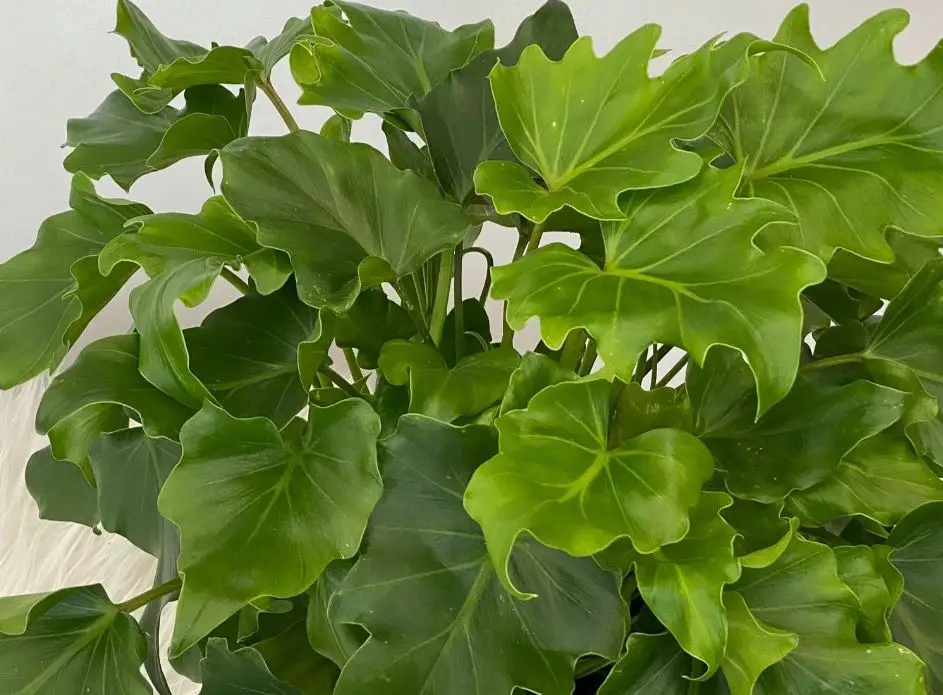Large tropical plants like the tree (or hope) philodendron are often cultivated inside as houseplants. The modest philodendron hope is a more recent hybrid with the same beautiful leaves but a more manageable size. To enjoy one or more of these tropical beauties in your home, learn about philodendron small and regular home care.

About the Philodendron Hope Plant
Philodendron bipinnatifidum, sometimes called tree philodendron, is the symbol of hope. It belongs to the large philodendron genus of tropical plants. Brazil, Argentina, and Bolivia are among the countries in South America where the hope philodendron is indigenous.
In its natural habitat, the hope philodendron may reach heights of up to 4.5 metres (15 feet) outside. It will grow to a maximum height of around 6 feet (2 m) and 8 feet as a houseplant (2 m.)
Despite the name “tree philodendron,” this is more of a shrub. It has broad, widely lobed leaves that are glossy green. Hope is a well-liked indoor plant because of its lovely leaves, tropical appearance, and minimal care requirements.
Hope vs Philodendron Little Hope
A smaller version of the philodendron was created to resemble hope. Little hope philodendron is identical to its larger cousin in appearance, but it only reaches heights and widths of one to two feet (31 to 61 cm).
Philodendron Hope Care
Like other philodendrons, care for both hope and tiny hope is similar and mostly hands-off. Begin with premium potting soil. Philodendrons prefer rich, fertile soil, but it should also drain properly. To prevent the soil from becoming excessively acidic, do not add peat moss for drainage.
The tree philodendron’s lighting requirements are similar to those it would encounter in the wild: strong yet indirect light or dappled shadow. Pick a window with enough sunlight and a light shade or curtain to block the light. To provide partial shade in a bright, sunny window, lay a little hope philodendron under a bigger plant.
Consistently mist the soil in the container, but never let it get wet. Waiting until the top inch and two of soil (2.5–5 cm) has dry before giving philodendrons a thorough bath is the recommended method for watering them. When watering, let some water flow out of the bottom to ensure that the whole root system has been saturated.
Your hope philodendron loves warm, humid air since it is a tropical plant. However, philodendron often adapts to the sometimes dry indoor environment seen in most houses. Do not place your plant next to a vent that blows dry air or in a chilly, draughty environment. With a pebble tray below the container, you may raise the humidity level surrounding the plant. Additionally, it helps drainage after watering.
Your philodendron will endure much neglect, but it also appreciates frequent feedings. Please treat it with a balanced houseplant fertiliser during the growth season, approximately once a month. In the autumn and winter, cut down on fertiliser.
Pruning is only necessary for philodendrons if you want to reduce the size or remove any dead leaves. As it becomes bigger, the larger hope philodendron could get floppy. To provide support, you might stake or prune part of the stems.
Philodendron Hope Propagation
Take cuttings of your small hope or hope philodendron if you wish to share them with friends. Make an incision on a stem just below a node, then submerge the cutting in water. Place it somewhere with strong but indirect light, and watch for roots to appear. Plant the cutting in the ground after the roots are one to two inches (2.5–5 cm) long.
A fantastic indoor plant is the tree philodendron. It adds a calm, tropical atmosphere to any space and does not need maintenance. You have more alternatives and may choose a plant that suits your requirements in two sizes.

